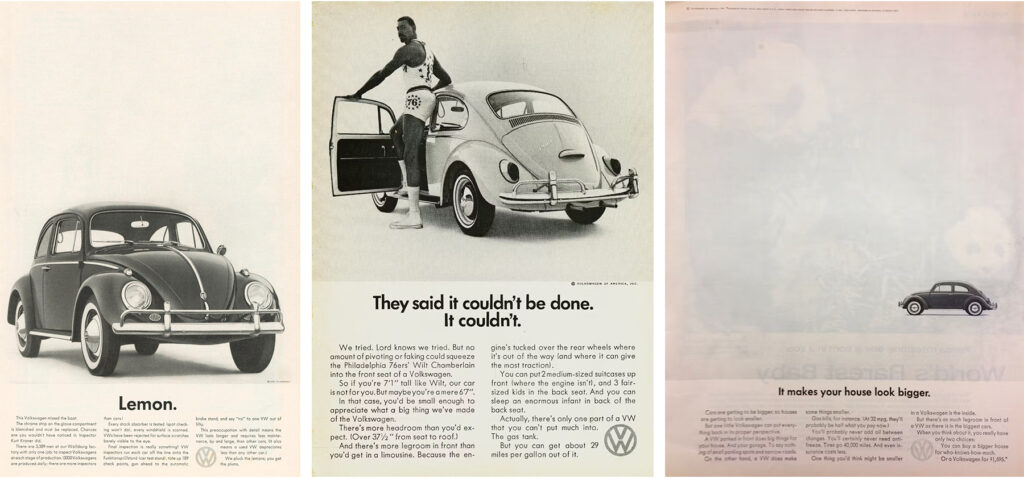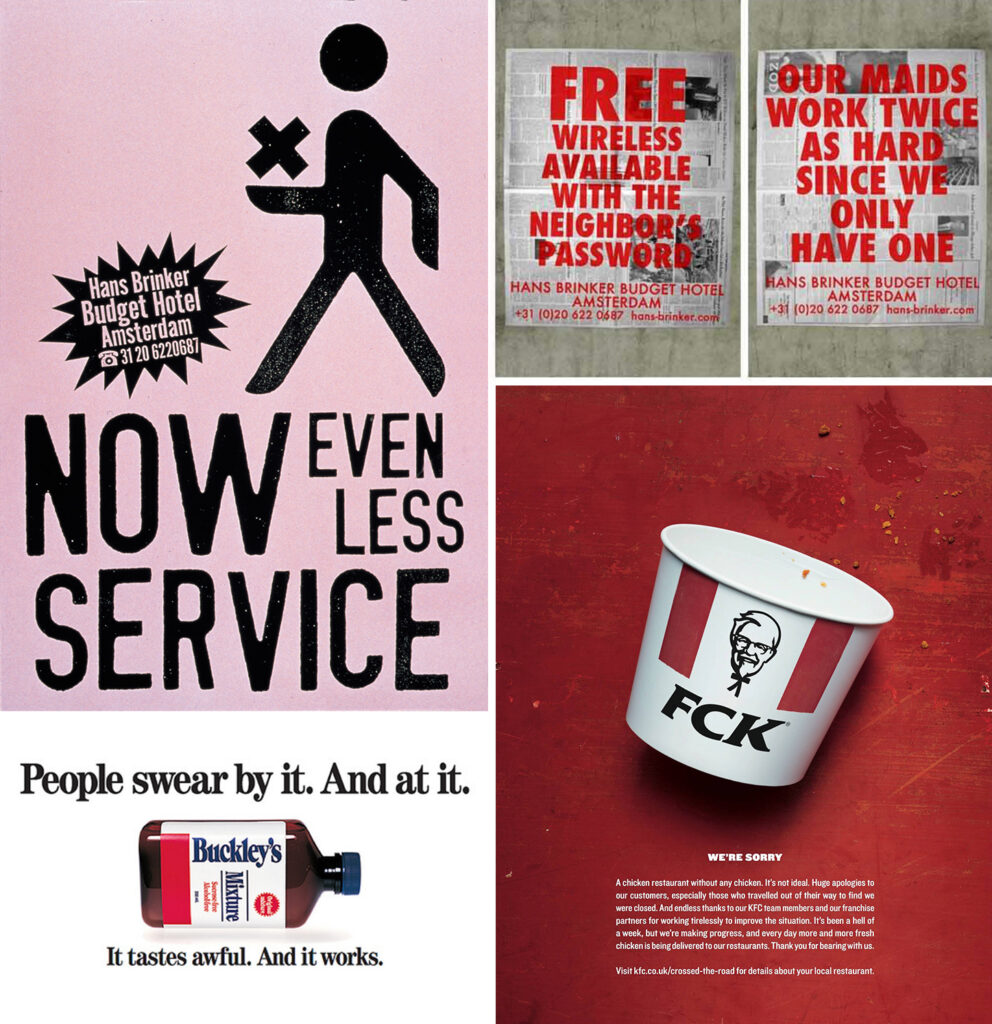How Bad Can Be So Good in Advertising
Flipping the script on negatives is common practice in marketing and advertising. You may have even seen the examples coming up later on.
Still, it’s a topic worth talking about. Which is exactly the point—it gets attention and it’s memorable.
This tactic is used by copywriters, creative directors, and even comedians. Hell, rappers and other lyricists use it. (B-Rabbit in 8 Mile, anyone?) It involves taking a flaw and turning it into an unexpected positive.
“… it gets all of the reasons why [consumers] wouldn’t buy your product out of the way and challenges them to consider why they would.”
Dan Nelken, A Self-Help Guide for Copywriters
You can’t hide faults forever, and you can’t control what people say, think, and feel. But you can use their opinions to your advantage. Plus, modern consumers demand more accountability from brands, often supporting those that are human-first.
Well, what’s more human than accepting your imperfections?
Transparency shows leadership
Taking ownership, being honest and transparent about your shortcomings is considered leadership. Done right it can capture attention, differentiate your brand, and earn loyalty in a market crammed with competitors.
In part, this is what it means to be an integrated brand. Being empathic, understanding the pain points of your target audience, and being open to its criticism. Then responding head-on.
This takes bravery. It’s not easy to face the negative truths and perceptions of your brand. Nor is accepting real defects in your products and services—or listening to customer and member complaints and seeing things from their perspective.
On top of it all, you have to sell the idea of how highlighting the bad will be good for the brand. From your boss to your client, risky advertising can be hard to get buy-in. Sometimes, it’s too bold.
But it can be effective. Let’s explore a few examples of brands doing it right.

Disarm bad first impressions
Full disclosure: this tactic is not suitable for every brand. And unless this type of language or messaging is at the core of your identity, it’s not something to rely on for every campaign.
But advertising is everywhere and your audience is bombarded with brands shouting “better, faster, stronger!” Do the same and you’re guaranteed to blend in. Do the opposite and people take notice.
Consider Volkswagen when it committed itself to the U.S. market in the 1950s and 60s. American vehicles were big, fast, and flashy. The Beetle wasn’t. It was small, slow, and bug-like in appearance.
What did VW do?
It addressed the elephant in the room and leaned into what some American car buyers considered to be disadvantages. It framed negatives into positives by leaning into what made the Beetle different
- Small became easy to park and made your house look bigger
- Slow became safe, reliable, and better fuel economy
- Ugly became a story about quality control

Two steps to owning your dirt
Shock value can stop the scroll, stop the reader from flipping the page, and stop the audience from tuning out. But the real benefit of this tactic is it takes the wind out of your critics’ sails. Putting your brand on full display and owning your dirt gives you the upper hand.
It’s refreshing to see a business call themselves out. Like KFC admitting its fries suck and apologizing for running out of chicken in the United Kingdom. Or one of the most well-known examples: Buckley’s “It takes awful. And it works.”
This approach is also a way of weeding out those who aren’t in your audience. More importantly, it’s a way of attracting those who vibe most with your brand.
Author and copywriter, Dan Nelken, calls it owning your dirt. Here’s how it’s done.
Step 1:
- Search through customer reviews online, do surveys, and talk to your employees;
- list all the negatives associated with your brand, products, and services; and
- note the trends and common frustrations.
Even the most outlandish, trollish comments can prove useful. Take beverage company Liquid Death, it turned a nasty tweet into a viral ad and earned praise from fans—despite grossing them out at the same time.
Step 2:
- Brainstorm a list of benefits for each of the negatives;
- rationalize them however you can; and
- don’t judge your ideas at this point (quantity leads to quality)
How do you know when you’ve struck gold? By understanding the target audience and having research to back the strategy.
The Hans Brinker Budget Hotel in Amsterdam, for instance, knows its guests aren’t after a five-star stay. Most are young tourists backpacking across Europe. They’re more concerned about money than comfort—let’s be honest, they’re there for a good time, not a long time.
Resonate with authenticity
Consumers appreciate the real, the imperfect, and the genuinely human. They crave authenticity, especially in a digital world saturated with glossy perfection and the onslaught of AI generated content.
If you want to leave a lasting impression, you have to do something different. Like using a negative as a positive to capture attention. Get in touch when you’re ready to be bad. Alphabet® is here to show you how it can be oh so good.